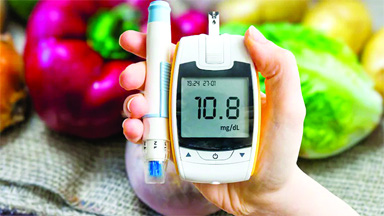
Low Glycemic Index (GI) foods are those that cause a slow and gradual rise in blood sugar levels after consumption. The Glycemic Index measures how quickly a carbohydrate-containing food increases blood sugar, with low-GI foods being digested and absorbed more slowly. Diabetics should prioritise low-GI foods because they help manage blood sugar levels, reduce insulin spikes, and lower the risk of complications such as heart disease, nerve damage, and kidney issues. These foods are not only beneficial for diabetics but also promote overall health by supporting weight management, improving digestion, and sustaining energy levels. Including a variety of low-GI foods in the diet ensures better blood sugar control and long-term well-being. Read on as we share some below.
1. Oats
Oats are an excellent low-GI food that provides soluble fibre, specifically beta-glucan, which slows digestion and stabilises blood sugar levels. They also help lower cholesterol and keep you full for longer, preventing unhealthy snacking.
2. Chickpeas
With a GI of around 28, chickpeas are a great source of protein, fibre, and complex carbohydrates, making them ideal for diabetics. They promote better blood sugar control, improve gut health, and reduce the risk of cardiovascular diseases.
3. Quinoa
Quinoa (GI: 53) is a protein-rich grain that contains all nine essential amino acids, fibre, and antioxidants. It provides steady energy, helps control blood sugar, and supports muscle recovery. Quinoa is an excellent substitute for rice in diabetic-friendly meals.
4. Lentils
Lentils have a low GI (around 32) and are packed with fibre and plant-based protein. They help slow the absorption of glucose into the bloodstream, reducing blood sugar spikes. They also aid in digestion and improve heart health when included regularly in the diet.
5. Leafy greens
Leafy greens have an extremely low GI (below 15) and are rich in vitamins, minerals, and antioxidants. They support overall metabolic health, reduce inflammation, and provide essential nutrients without causing blood sugar fluctuations.
6. Nuts and seeds
Most nuts and seeds have a low GI (below 20) and are high in healthy fats, protein, and fibre. They help improve insulin sensitivity, reduce cholesterol levels, and keep hunger in check. A small handful of nuts or adding seeds to smoothies and yogurt can be a healthy snack option.
7. Berries
Berries have a GI of around 25–40 and are loaded with antioxidants, vitamins, and fibre. They help regulate blood sugar, reduce oxidative stress, and support brain health.
8. Greek yogurt
Greek yogurt is a protein-rich dairy option that helps regulate blood sugar while providing probiotics for gut health. It has a lower carbohydrate content compared to regular yogurt, making it an ideal choice for diabetics when consumed unsweetened.





Be the first to comment